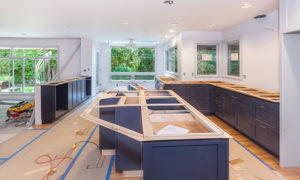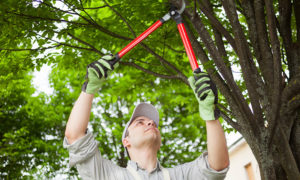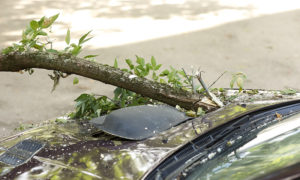Most people want to live in a space that reflects their personal style or aesthetics — and paint is one of the easiest ways to accomplish that. But as a tenant, can you paint a rental apartment? Here’s what you need to know about landlords and renters painting responsibilities.
Can Renters Paint? Take a Look at Your Lease Agreement!
The rental contract or lease agreement should be the first thing that tenants should look at. It is an important document that outlines the terms of occupancy, specifically what one can or cannot do to the rental property during the tenancy. To answer the question of whether painting rental property is allowed, make sure to look for these specific clauses.
-
Painting Clause
The painting clause should make it clear whether a tenant can or cannot paint the rental property during his/her tenancy. Depending on the terms, a tenant may be held liable for painting the dwelling without the landlord’s written consent.
-
Security Deposit Clause
A landlord may have the authority to deduct from a tenant’s security deposit if the said tenant has made unapproved alterations, such as painting the rental property. The landlord can use the security deposit to restore the rental property to its original condition.
-
Moving Out Clause
A typical moving out clause requires tenants to leave the rental property clean and undamaged, with all furniture and appliances in proper working condition. Depending on the terms, tenants may need to repaint walls if the condition is beyond normal wear and tear. If the rental property is not “fit” for occupancy, the landlord may charge a tenant with cleaning and/or repair costs.
-
Alterations and Improvements Clause
The alterations and improvement clauses outline the extent of possible changes that a tenant can make to the rental property, as well as the procedures for making such alternations. Conversely, it will also tell you non-permissible alterations, improvements, or additions.
-
Paint Addendum to Lease Agreement
If no painting requirements were noted in the original lease agreement, a landlord may ask the tenant to sign a paint addendum. Tenants should also look at this document to determine whether they are allowed to paint their rental property.
Depending on your lease agreement, here are the most common rental property painting scenarios, as well as possible landlord painting requirements you may encounter.
1. Tenants Cannot Paint
Tenants are not allowed to paint their rental space. Aside from normal wear and tear, landlords expect tenants to leave the property in the same condition as it was during move-in. If there are unapproved changes, the landlord may deduct from a tenant’s security deposit or impose a repainting fee upon moving out.
2. Tenants Can Paint
There are some benefits to allowing tenants to paint the rental property such as increasing property values without having to spend on painting expenses. As such, some landlords may allow tenants to paint the rental property. Nevertheless, the security and moving-out clauses will still be in effect so tenants will be held liable for any damage that results from painting the rental property. You should also confirm with your landlord, in case there are additional requirements such as a non-refundable painting fee.
3. Tenants Can Paint But with Conditions
 Many landlords will allow tenants to paint their rental property — but with several conditions. For instance, there may be a list of pre-approved colors or types of paint finishes that you can only use.
Many landlords will allow tenants to paint their rental property — but with several conditions. For instance, there may be a list of pre-approved colors or types of paint finishes that you can only use.
Landlords also typically require a written request from tenants. This helps them determine the scope and cost of the painting project, as well as whether the painting will be done by the tenant or a professional.
It’s helpful to have a landlord-tenant painting agreement in place so that both parties are protected. The landlord can specify the painting requirements, while tenants have explicit approval for repainting the rental property.
Landlord Painting Responsibilities: Are Landlords in Charge of Repainting?
Are landlords required to paint between tenants? Who is responsible for painting landlord or tenant? These are common questions asked by both parties. Here’s what you need to know.
There are very few laws that require landlords to repaint a rental property between tenants or at any other time. However, based on the implied warranty of habitability law, landlords are required to maintain a safe and livable environment.
If the paint in a rental property is creating unsanitary or unsafe conditions, the landlord is responsible for providing a remedy. For example, if the rental property has lead-based paint and it is starting to crack or chip, the landlord will be responsible for repainting the walls.
Even though there are no mandates for repainting a rental property, landlords should consider repainting in between tenants. A fresh coat of paint can instantly make a rental property look newer and brighter. Thus, it will be easier to attract new tenants. Landlords may even command a higher rental price based on how prospective tenants view your rental space. If you’re in a competitive neighborhood, little things like a new coat of paint can make a world of difference.
Frequently Asked Questions About Renters Painting Responsibilities
If you’re still unclear about landlords’ and renters’ painting responsibilities, consider these answers to the most frequently asked questions about painting a rental property.
Does a Tenant Have to Paint When They Move Out?
Some landlords allow tenants to paint their rental property — on the condition that tenants return it to its original condition after the lease expires. If that’s the case, the tenant will have to repaint the rental property when they move out.
How Often is a Landlord Required to Paint?
There are no nationwide laws that require landlords to paint their rental property. However, interior paint typically has a useful life of 3 to 5 years. As such, landlords should consider repainting their rental property within that time frame.
Do Landlords Have to Paint Between Tenants?
Landlords do not have to paint in between tenants — unless the current paint of a rental property creates a safety or health hazard. However, most landlords choose to repaint in between tenants for the sake of convenience. It’s much easier to schedule a repainting job when it coincides with a tenant’s move-out date.
How Often Do Landlords Have to Paint in California?
California does not have a statewide mandate for painting rental properties. However, in the city of West Hollywood, landlords of rent-stabilized units are required to paint every four years. There is a similar mandate in New York City, where landlords are required to paint every three years.
Are Tenants Responsible for Painting?
Tenants are not responsible for painting a rental property. Most landlords also prefer to handle the painting themselves. This is to prevent any kind of damage that could be caused by an inexperienced painter. For example, a tenant may accidentally paint on woodwork or natural stone finishes. However, if the painting job is due to the tenant’s own behavior, the landlord may deduct the expenses from your security deposit or send you a bill.
Can Landlord Deduct Painting from Security Deposit?
Landlords can deduct painting expenses from the security deposit only for reasons stated in the lease agreement. They cannot charge tenants for repainting due to normal wear and tear. However, make sure to check your state and local laws as well. Some states have strict rules on what can or cannot be deducted from a tenant’s security deposit.
Can a Tenant Paint Without Permission?
A tenant can certainly paint a rental property without permission. However, it’s not something that we recommend. Aside from incurring fines or penalties, painting without permission can be considered a violation of your lease. Landlords can use this as a justifiable reason to evict a tenant.
A Reasonable Answer to ‘Can Renters Paint Rental Units?’
There’s no definitive answer to the question: “Can renters paint a rental property?” It will depend on your landlord and the lease agreement that you signed. If there is a need for it, though, there’s no harm in asking the landlord to paint the rental property. If you are a long-term tenant, the landlord may even consider giving you special consideration to paint. Before making any changes, though, make sure to consult your landlord. This is the best way to prevent issues or misunderstandings.
As a landlord, it can be challenging to deal with painting and maintenance requests from tenants — especially when combined with many other duties and responsibilities. If you need help with the day-to-day operations, consider hiring a property manager. Feel free to utilize the Rental Choice online directory to find the best property management company for your needs!
RELATED ARTICLES:
- 15 Key Questions To Ask A Landlord Before Renting
- 5 Most Common Rental Lease Violations And How To Handle Them
- When Is It Right To Evict A Tenant?



 Aside from the bathroom, the kitchen is another common non-negotiable. Tenants often look for apartments with kitchens where they can actually cook. With the younger population pivoting towards a healthier lifestyle, home-cooked meals are a huge sell. Plus, it’s a bonus if they can do it in a kitchen that’s aesthetically pleasing, too.
Aside from the bathroom, the kitchen is another common non-negotiable. Tenants often look for apartments with kitchens where they can actually cook. With the younger population pivoting towards a healthier lifestyle, home-cooked meals are a huge sell. Plus, it’s a bonus if they can do it in a kitchen that’s aesthetically pleasing, too. A handyman is an all-around contractor that can usually make small fixes and perform smaller renovations.
A handyman is an all-around contractor that can usually make small fixes and perform smaller renovations. Full-service lawn care, on the other hand, is the complete opposite of self-service lawn care. Under this type of rental property lawn maintenance agreement, the landlord or property manager takes full responsibility for yard care and landscaping. This may also include snow and ice removal, especially in areas that experience a lot of snowfall.
Full-service lawn care, on the other hand, is the complete opposite of self-service lawn care. Under this type of rental property lawn maintenance agreement, the landlord or property manager takes full responsibility for yard care and landscaping. This may also include snow and ice removal, especially in areas that experience a lot of snowfall. Tree trimming and removal are not considered as part of regular landscaping. However, it is still an essential
Tree trimming and removal are not considered as part of regular landscaping. However, it is still an essential  If a natural disaster causes a tree to fall on a tenant’s car, your insurance claim is likely to be denied — unless “Acts of God” are included in your policy. However, if you have proof that there was neglect on the side of the landlord, you may be able to file a claim with your insurance provider.
If a natural disaster causes a tree to fall on a tenant’s car, your insurance claim is likely to be denied — unless “Acts of God” are included in your policy. However, if you have proof that there was neglect on the side of the landlord, you may be able to file a claim with your insurance provider. Company
Company